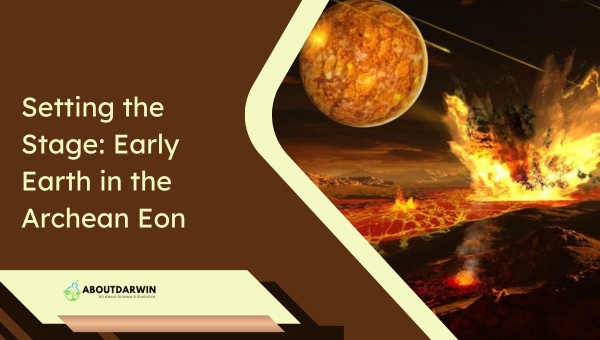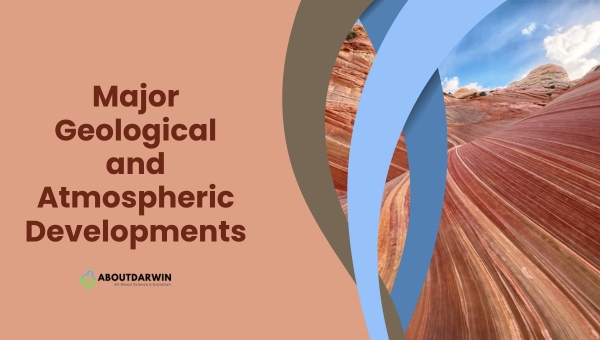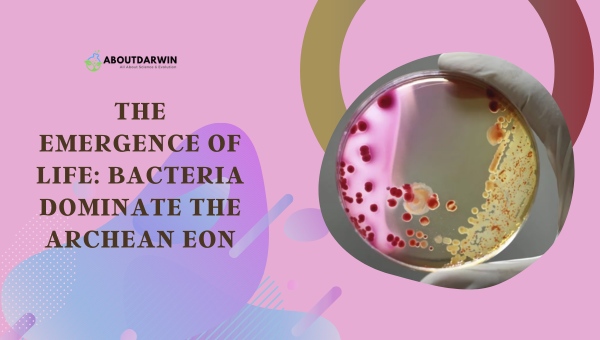Physical Address
304 North Cardinal St.
Dorchester Center, MA 02124
Our planet has a long and complex history, and the Archean Eon played a crucial role in shaping the Earth as we know it today. From 4.0 to 2.5 billion years ago, this period was marked by significant geological, atmospheric, and biological changes that laid the groundwork for life on Earth to evolve.
During the Archean Eon, Earth’s crust and mantle began to solidify, allowing for the formation of the first continents. At the same time, the planet’s atmosphere was also transforming, undergoing significant shifts from a mixture of ingredients resulting in the establishment of a more stable, oxygen-rich atmosphere.
Perhaps one of the most notable events of this eon was the emergence of life; the first single-celled organisms appeared around 3.5 billion years ago, breathing life into Earth’s ancient oceans.
As we continue to explore the Archean Eon, it becomes evident how critical this period was in laying the foundation for the Earth we inhabit today. From the birth of continents to the first stirrings of life itself, the Archean Eon stands as a testament to the powerful forces shaping our world.
Contents
The Archean Eon, spanning roughly 4.0 to 2.5 billion years ago, is a fascinating era that saw the formation of our planet’s oldest rocks and the emergence of life. In this section, we’ll explore the factors that set the stage for the diverse and dynamic environment that emerged.

During the Archean Eon, Earth was vastly different from today’s. The atmosphere lacked oxygen and was mainly composed of carbon dioxide, methane, and water vapor. This meant that there was no protective ozone layer, so the planet would have been exposed to high levels of ultraviolet radiation. Additionally, the Sun was only about 70% as bright as it is now, making the climate cooler.
In spite of the cooler temperatures, there was still a significant amount of volcanic activity during the Archean Eon, contributing to the formation of the Earth’s crust. The first continental crusts began to form as volcanic materials accumulated, and tectonic activity led to the formation of the earliest continents, called “cratons.”
The Earth’s hydrosphere also underwent significant changes during this eon. No ocean basins existed at the start of the Archean, but as tectonic activity continued, the first oceans began to form. The water in these oceans came from a combination of processes, including volcanic outgassing and the release of water trapped in minerals.
The Archean Eon witnessed several important developments:
The Archean Eon played a crucial role in shaping our planet and the life it harbors. Although many details of this early period remain a mystery, the insights gained from studying the ancient rocks and microbes that populated the Earth during this time have significantly advanced our understanding of the planet’s development and the origins of life.
The Density of Earth: Insights into Our Earth’s Constituents
Diving into the Archean Eon, it’s essential to discuss some major geological and atmospheric developments during this era. From approximately 4.0 to 2.5 billion years ago, the Archean Eon marks a significant period in Earth’s history.

One of the most notable features of the Archean Eon is the formation of the crust and continents. It was during this time that the first continental crusts emerged, primarily composed of granite, tonalite, and trondhjemite.
These mineral-rich crusts provided the foundation for future landmasses on Earth. Throughout the Archean, processes such as volcanic activity and plate tectonics contributed to the gradual assembly of the continents we know today.
Another vital development during the Archean Eon was the formation of the Earth’s atmosphere. The early atmosphere was dominated by hydrogen and helium but gradually changed as the planet cooled, allowing for the presence of other gases like methane, ammonia, water vapor, and carbon dioxide. A significant event during this time was the emergence of cyanobacteria, or blue-green algae. These organisms:
The Archean Eon was also characterized by the presence of volcanic and geothermal activity. These processes helped to shape the Earth’s surface and provided an essential heat source in the form of geothermal gradients. These variations in temperatures at different depths within the Earth contributed to the following:
The emergence of stable isotope evidence in the Archean Eon has shed light on the existence of a liquid water ocean during this era. Some studies suggest periodic episodes of glaciation during the Archean, hinting at a potential early climate. These early oceans played a critical role in the development of life on Earth.
The significant geological and atmospheric developments during the Archean Eon were fundamental to shaping our planet and its future. From the formation of continents and the Earth’s atmosphere to the emergence of early oceans, these events set the stage for life as we know it today.
10 Asthenosphere Facts: Exploring the Earth’s Mysterious Layer
The Archean Eon, spanning 4.0 to 2.5 billion years ago, witnessed the emergence of life on Earth, which significantly impacted this period. It was during this era that bacteria took center stage, evolving and thriving in a variety of environments.

One of the key events in the Archean Eon was the formation of the first proto-continents. This led to the development of ancient oceans, providing crucial habitats for early lifeforms. In fact, some of the oldest known fossils, dating back to about 3.5 billion years ago, were discovered in these marine environments.
Life during the Archean Eon was predominantly prokaryotic. These primitive, single-celled organisms lacked the complex internal structures and a nucleus found in eukaryotes. The most abundant prokaryotes at this time were bacteria. They thrived on Earth because of their remarkable adaptability to various environmental conditions. Some examples of these early bacterial communities include:
The dominance of bacteria during the Archean Eon had profound effects on Earth. Oxygen-producing cyanobacteria played a pivotal role in developing Earth’s atmosphere by producing oxygen through photosynthesis.
This oxygenation event, which occurred around 2.45 billion years ago, eventually gave rise to the Great Oxygenation Event. This period saw a marked increase in atmospheric oxygen levels, laying the groundwork for more complex life forms to emerge in later geological eons.
The Archean Eon was an era of early geological and biochemical evolution. Bacteria were the dominant life forms, showcasing their adaptability to the diverse environments of the time. Their legacy, particularly that of the cyanobacteria, would play an instrumental role in shaping the Earth’s atmosphere and setting the stage for more complex life to take hold on our planet.
The Archean Eon’s significance cannot be overstated, as it laid the groundwork for life and Earth’s development. Spanning 4.0 to 2.5 billion years ago, it was during this time that our planet saw major transformations. Let me delve into why this period was essential for shaping Earth as we know it today.
During the Archean Eon, the Earth’s crust stabilized, setting the stage for the formation of continents. Additionally, there was a gradual decrease in volcanic activity, which allowed the planet to cool down enough for the formation of oceans. Stable landmasses and vast bodies of water were critical for the emergence of life.
It was within these primordial oceans that life began to emerge. The development of primitive single-celled microbial life occurred, such as archaea and bacteria. These early forms of life played a pivotal role in altering Earth’s atmosphere, setting the stage for more advanced life forms. Photosynthesizing cyanobacteria produced oxygen, eventually leading to the Great Oxygenation Event around 2.4 billion years ago.
Below is a short recap of some of the key events from the Archean Eon:
The Archean Eon was an exceptional period in Earth’s history, as it set the stage for life as we know it. From the development of stable crust and continents to the emergence of microbial life, these events are pivotal in shaping the world we inhabit today.
As we examine the Archean Eon, we are reminded of its significance in establishing the foundation for our planet’s continued evolution.